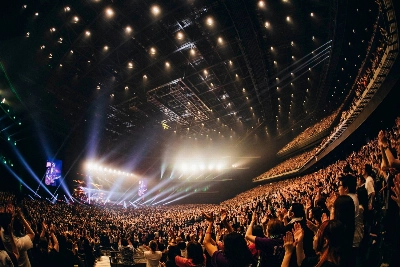A number of major Japanese firms agreed to solid pay increases on Wednesday as part of this year’s spring wage negotiations, sustaining momentum for hikes in a nation that has for decades struggled with low wage growth.
This year’s annual negotiations, known as shuntō, conclude this month and are being monitored especially closely by policymakers, as developments could be a decisive factor in the Bank of Japan’s decision on whether to adjust its ultraloose monetary policy next week or next month.
Inflation remains at historically high levels and is hindering consumption, so economists say it is critical to see a virtuous cycle of wage increases by large companies with these also spreading to small and midsize enterprises.
“With strong corporate earnings and labor shortages, the current environment certainly motivates companies to raise wages,” said Shinichiro Kobayashi, an economist at Mitsubishi UFJ Research and Consulting.
Toyota, Japan’s largest automaker, has fully accepted workers’ demands and offered its largest wage hike since 1999. The carmaker's labor union had demanded a hike of between ¥7,940 ($54) and ¥28,440 for monthly wages depending on job type and position. Toyota will also raise salaries for new employees.
Nissan also fully met the union's demand of an average ¥18,000 hike to monthly pay.
Other major manufacturers, including electrical machinery companies and steelmakers, also agreed to labor unions' demands.
Nippon Steel will raise its monthly base salary by ¥35,000, exceeding the ¥30,000 that the labor union had demanded and marking a 14.2% increase when combined with an annual seniority-based pay hike. JFE Steel and Kobe Steel will meet labor unions’ demands of a ¥30,000 increase to monthly pay.
This year’s shuntō season reached a peak among large firms on Wednesday, but a number of companies had already struck deals with labor unions on wage hikes.
Honda and Mazda agreed to record pay increases. In the nonmanufacturing sector, Japan Airlines said it would introduce an average 6% hike — the highest base salary increase since 1992 — while Ajinomoto will also offer an average 6% increase.
Momentum for wage hikes has been growing since last year’s shuntō, which delivered the highest pay rise in 30 years, partly in response to inflation. According to the Japanese Trade Union Confederation, better known as Rengo, the average pay raise seen at 5,272 of its affiliated unions last spring was 3.58%. Broken down by company size, large firms with 1,000 or more employees saw a 3.69% raise.
With a slew of major firms offering robust pay hikes, “I think it’s almost certain that this year’s (shuntō wage hike figure) will be much higher than last year's,” Kobayashi said, adding that it will likely top 4% and might even reach over 4.5%.
Still, the pace of wage hikes has not kept up with inflation, with Japan’s real wages falling for the 22nd straight month in January. Consumption has also remained weak.
The shuntō negotiations largely reflect the trend among big companies, so a crucial question is whether pay hikes spread to small and midsize firms that employ about 70% of Japan’s workers.
“Small and midsize enterprises will probably raise wages as well, but I think it will be quite difficult for them” to introduce hefty hikes of more than 5%, Kobayashi said. “If they are unable to sufficiently keep up with (the pay hike trend), it is possible that the macro-based wage increase rate will not grow as much as expected.”
Although they might lack the resources to raise wages, many small and midsize firms will likely be forced to implement defensive wage increases anyway to retain employees.
Last year, the pay hike figure at companies employing 100 to 299 people stood at 3.32%. The increase at companies with less than 100 workers was 2.94%.
Nonetheless, the pay hikes at large firms will likely signal to the BOJ that a healthy cycle of wage growth and price increases is in sight, meaning it can soon start the normalization of its unprecedented monetary stimulus.
Many central bank watchers predict that the BOJ will end its negative rate policy at either its policy meetings scheduled next week or next month.
“I believe this year’s wage hike level will build up the BOJ’s confidence that a virtuous cycle will be realized,” Kobayashi said, adding he predicts that the central bank will make the move in April.


















With your current subscription plan you can comment on stories. However, before writing your first comment, please create a display name in the Profile section of your subscriber account page.